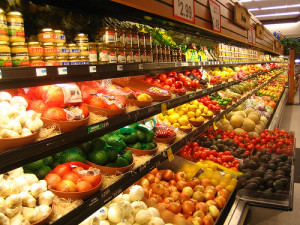Salmonella accounts for approximately 50% of produce-associated outbreaks in the United States, several of which have been traced back to contamination in the produce production environment. To quantify Salmonella diversity and aid in identification of Salmonella contamination sources, we characterized Salmonella isolates from two geographically diverse produce-growing regions in the United States.
 Initially, we characterized the Salmonella serotype and subtype diversity associated with 1,677 samples collected from 33 produce farms in New York State (NYS). Among these 1,677 samples, 74 were Salmonella positive, yielding 80 unique isolates (from 147 total isolates), which represented 14 serovars and 23 different pulsed-field gel electrophoresis (PFGE) types. To explore regional Salmonella diversity associated with production environments, we collected a smaller set of samples (n = 65) from South Florida (SFL) production environments and compared the Salmonella diversity associated with these samples with the diversity found among NYS production environments. Among these 65 samples, 23 were Salmonella positive, yielding 32 unique isolates (from 81 total isolates), which represented 11 serovars and 17 different PFGE types.
Initially, we characterized the Salmonella serotype and subtype diversity associated with 1,677 samples collected from 33 produce farms in New York State (NYS). Among these 1,677 samples, 74 were Salmonella positive, yielding 80 unique isolates (from 147 total isolates), which represented 14 serovars and 23 different pulsed-field gel electrophoresis (PFGE) types. To explore regional Salmonella diversity associated with production environments, we collected a smaller set of samples (n = 65) from South Florida (SFL) production environments and compared the Salmonella diversity associated with these samples with the diversity found among NYS production environments. Among these 65 samples, 23 were Salmonella positive, yielding 32 unique isolates (from 81 total isolates), which represented 11 serovars and 17 different PFGE types.
The most common serovars isolated in NYS were Salmonella enterica serovars Newport, Cerro, and Thompson, while common serovars isolated in SFL were Salmonella serovars Saphra and Newport and S. enterica subsp. diarizonae serovar 50:r:z. High PFGE type diversity (Simpson’s diversity index, 0.90 ± 0.02) was observed among Salmonella isolates across both regions; only three PFGE types were shared between the two regions. The probability of three or fewer shared PFGE types was <0.000001; therefore, Salmonella isolates were considerably different between the two sampled regions. These findings suggest the potential for PFGE-based source tracking of Salmonella in production environments.
Appl. Environ. Microbiol. July 2014 vol. 80 no. 13 3982-3991 doi: 10.1128/AEM.00348-14
Laura K. Strawna, Michelle D. Danylukb, Randy W. Woroboa and Martin Wiedmann
